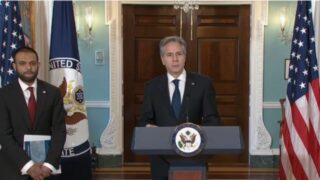While Mormon temples (open to Mormons only) had been denied exemptions for not offering “public religious worship,” Scientology won its case.
by Massimo Introvigne


Scientology won another case in its path to be recognized as a full-fledged religion when the London’s Upper Tribunal (Lands Chamber) ruled on January 5 on the case “Church of Scientology Religious Education College v. Andrew Ricketts, Valuation Officer.”
As the court noted in its decision, the case was not about whether Scientology is a religion. The question had already been answered in the affirmative by the United Kingdom Supreme Court in 2013 in the case “R. (Hodkin) v. Registrar General.” The 2023 Upper Tribunal decision starts with the words “Scientology is a religion,” and takes this point for granted.
What the Upper Tribunal had to decide was a different question, i.e., whether two buildings of the Church of Scientology of London should be considered tax-exempt because of their religious nature.
The decision moves from two important premises. First, it discusses the roles of chapels within Scientology churches. They are used for Sunday services, twice-weekly graduation and testimony ceremonies, weddings, funerals, naming ceremonies, and ordinations. The Upper Tribunal heard various testimonies, from which it concluded that services in the chapel occur regularly although in the life of a Scientologist they are somewhat less important than auditing and training based on the writings of the church’s founder L. Ron Hubbard.
Then, the Upper Tribunal examined some precedents, which interpreted a peculiar British law that only exempts churches and other religious buildings from taxes if they offer a “public religious worship.” Unlike in many other countries, it is not enough for a tax exemption that a building is used for religious worship. This worship should be public.
While in most countries of the world temples of the Church of Jesus Christ of Latter-day Saints (LDS), popularly known as the Mormon Church, are regarded as quintessentially religious buildings, thus tax-exempt, two British decisions concluded that the “religious worship” they offer is not “public,” and therefore they are taxable. In fact, only church members in good standing, identified as such by a document called “temple recommend,” are admitted into the LDS temples, while everybody can visit a LDS chapel, which is not a temple and is regarded as tax-exempt in the UK.
Even in the case of the Plymouth Brethren Christian Church (PBCC), British courts, as the Upper Tribunal decision notes, concluded that worship is not “public” and denied the tax exemption. Unlike in LDS temples, PBCC services are open to non-members—when I was researching my book “The Plymouth Brethren,” which Oxford University Press published in 2018, I experienced no problems in attending services, and was only asked not to take pictures or videos. However, British judges objected that PBCC services are not “advertised,” and introduced an “invitation test,” stating that religious organizations should actively “invite” non-members to their services if they want them to be considered “public.”
In the case of Scientology, the Valuation Tribunal for England (VTE) on June 10, 2021, had denied tax exemption to the Scientology premises in London, based on the argument that Sunday services were but a minor part of the activities of the church and were not advertised. However, the Upper Tribunal noted that when Mr. Jonathan Cooper of the Valuation Agency made an undercover Sunday visit with a colleague to the church, he noticed, as he testified, “a large poster in one of the display windows advertising Sunday worship and another inviting people into the building.
When he returned closer to the time of the service two stands had been placed outside, one advertising the Sunday service, and the other offering free personality testing. When they entered the building, he and his colleague were offered information and the opportunity to take the test, but when they expressed interest in the Sunday service they were made welcome to it.”


Despite Cooper’s experience, the Valuation Agency and the VTE insisted that Scientology “fails the ‘invitation test’ by making insufficient efforts to advertise its worship,” as evidenced by the fact that not many non-members attend the Sunday service. The Upper Tribunal rejected the argument, noting that “it is not the public’s response to an invitation extended by a church which marks a religious service out as public worship, it is the invitation itself and the openness of the church to admit any well-disposed persons who may choose to accept it.” Since Scientology is clearly open to admit non-members to its services, and actively invites them to attend, including via social media, it offers a “public worship service.”
The Valuation Agency’s further objection that Scientology premises do not look like a church to passers-by was also dismissed. The Upper Tribunal stated that. “The building’s imposing Portland stone façade features balconies and flagpoles which would not look out of place in the Vatican. Over the main entrance (which is fully glazed, affording a clear view of the interior) the words ‘Church of Scientology – London’ are prominently displayed in gold lettering. Emblazoned on a large white shield above the name is the eight-pointed Scientology emblem, a star superimposed on a cross. Six display windows at ground level feature posters, film terminals and other publicity material. This is not a building trying to conceal its use.”
As a consequence, the Upper Tribunal restored the tax exemption not only to the chapel but to a majority of the rooms and floors in the Scientology buildings, noting that British laws also exempt from taxes spaces “used in connection with a place of public religious worship and for the purposes of the organisation responsible for the conduct of public religious worship in that place.” Only for the L. Ron Hubbard Office (which Scientology maintains in all his churches as mark of respect for its founder) and some offices, the Upper Tribunal did not find a direct connection with religious worship and denied the exemption.
The Upper Tribunal decision is another in what is now a long sequel of decisions where courts in democratic countries adapt existing case law to a religion that is recognized as such but does not fit the traditional model of Christianity, Judaism, or Islam in its activities and churches. The decision should be applauded as a victory for religious liberty and a wise acknowledgement of contemporary religious pluralism.









